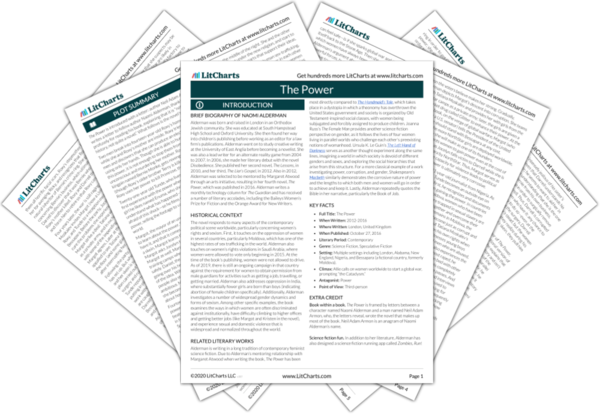AI ToolsNew
Tools to make learning and teaching easier
|
Previous
Chapter 24: Roxy
|
The Power: Chapter 25: Jocelyn Summary & Analysis |
Next
Chapter 26: Margot
|


Upgrade to unlock the analysis and theme tracking for all of The PowerThe Power!
Get LitCharts A+